 Search
Search

What Tarot card means revenge?
In tarot, the concept of revenge is nuanced and interpreted through various cards that symbolize different aspects of human experience and emotion. While there isn't a single card specifically representing revenge, certain cards may suggest themes of justice, conflict, or consequence.
Tarot Cards Associated with Revenge:
The Justice Card (XI): Often depicted with a figure holding scales, the Justice card signifies fairness, balance, and accountability. While it doesn't directly represent revenge, it may suggest the pursuit of justice or retribution for perceived wrongdoing.
The Tower Card (XVI): Portrayed as a tower struck by lightning, the Tower card symbolizes sudden upheaval, chaos, and destruction. In some interpretations, it can represent the consequences of seeking revenge or the collapse of structures built on vengeance.
The Ten of Swords: Depicting a figure lying face down with ten swords piercing their back, the Ten of Swords represents betrayal, defeat, and rock bottom. While it doesn't explicitly denote revenge, it may suggest the aftermath of a conflict or the futility of seeking vengeance.
Interpreting Revenge in Tarot Readings:
Context and Surrounding Cards: When interpreting tarot cards in a reading, consider the context and surrounding cards to understand the broader narrative. Cards adjacent to those associated with conflict or justice may provide clues about the potential consequences of seeking revenge.
Personal Reflection: Tarot readings offer opportunities for introspection and self-awareness. Instead of fixating on revenge, use tarot as a tool for exploring underlying emotions, motivations, and potential paths forward in resolving conflicts or seeking closure.

Why are Tarot cards so important?
Tarot cards hold significant importance for many individuals, serving as powerful tools for self-reflection, guidance, and spiritual exploration. Their importance stems from their ability to offer profound insights into various aspects of life and the human psyche.
Connection to Personal Growth:
Self-Reflection: Tarot cards provide a mirror to one's innermost thoughts, feelings, and desires, encouraging deep self-reflection and introspection. By engaging with the symbolism of the cards, individuals gain clarity and insight into their subconscious motivations and patterns.
Guidance and Decision-Making: Tarot readings offer guidance and perspective on life's challenges and uncertainties. Whether navigating relationships, career decisions, or personal dilemmas, tarot cards provide valuable insights and alternative viewpoints to inform decision-making.
Spiritual and Metaphysical Exploration:
Connection to Spirituality: For many, tarot serves as a spiritual tool for connecting with higher consciousness or divine guidance. Tarot readings can facilitate a deeper understanding of spiritual principles and offer a sense of connection to the universe or higher powers.
Exploration of Archetypes: Tarot cards are rich in symbolism and archetypal imagery, reflecting universal themes and narratives found in mythology, psychology, and spirituality. Engaging with these archetypes allows individuals to explore collective unconscious patterns and gain deeper insights into the human experience.
Community and Tradition:
Community Engagement: Tarot has a vibrant community of practitioners, enthusiasts, and scholars who share knowledge, insights, and experiences. This sense of community fosters support, collaboration, and mutual learning, enriching the tarot experience for individuals worldwide.
Historical and Cultural Significance: Tarot cards have a rich history spanning centuries and are deeply embedded in various cultural and esoteric traditions. Their enduring relevance and cultural significance contribute to their importance as tools for divination, reflection, and storytelling.

What was the original purpose of tarot cards?
The original purpose of tarot cards traces back to their emergence in the late Middle Ages, rooted in diverse cultural and historical contexts. Initially conceived as playing cards, tarot decks evolved to encompass a broader range of uses, including divination, storytelling, and spiritual exploration.
Playing Cards in Medieval Europe:
Entertainment and Games: Tarot cards originated as playing cards in 14th-century Italy, primarily used for entertainment purposes such as trick-taking games and gambling. The earliest tarot decks, known as "tarocchi," featured four suits similar to modern playing cards, along with additional trump cards.
Evolution into Divinatory Tools:
Occult and Esoteric Practices: Over time, tarot cards became associated with occult and esoteric traditions, particularly in the 18th and 19th centuries. Influential figures such as French occultist Éliphas Lévi and English mystic Arthur Edward Waite contributed to the development of tarot as a tool for divination and spiritual inquiry.
Tarot as a Divinatory System: Tarot decks evolved to include symbolic imagery, archetypal themes, and allegorical narratives, facilitating their use in divinatory practices. Tarot readings emerged as a method for accessing intuitive insights, exploring subconscious patterns, and seeking guidance on life's challenges.
Modern Uses and Interpretations:
Psychological Exploration: In the 20th and 21st centuries, tarot cards gained popularity as tools for psychological exploration and personal growth. Psychologists such as Carl Jung viewed tarot symbolism as reflecting universal archetypes and collective unconscious patterns, offering valuable insights into the human psyche.
Cultural and Creative Expression: Tarot decks continue to evolve, reflecting diverse cultural influences, artistic styles, and spiritual perspectives. Contemporary tarot practitioners use decks for creative expression, storytelling, and ritualistic practices, highlighting the enduring relevance and adaptability of tarot symbolism.

Are tarot or Oracle cards better?
The choice between tarot and oracle cards often depends on individual preferences, intentions, and the desired outcomes of a reading. Both tarot and oracle cards offer unique insights and guidance, but they differ in structure, symbolism, and interpretive flexibility.
Tarot Cards:
Structure and Symbolism: Tarot decks typically consist of 78 cards divided into two main categories: the Major Arcana and the Minor Arcana. Each card carries specific symbolism and archetypal meanings, allowing for rich and complex readings.
Structured Interpretation: Tarot cards follow a structured framework based on traditional tarot systems such as the Rider-Waite-Smith or Thoth decks. This structured approach provides a comprehensive framework for interpreting card combinations, spreads, and narrative arcs.
Depth and Complexity: Tarot cards offer deep layers of symbolism and narrative, making them suitable for in-depth exploration of personal and spiritual themes. They are favored by those seeking detailed insights into complex situations or psychological patterns.
Oracle Cards:
Variety and Flexibility: Oracle card decks come in various forms, with each deck designed around a specific theme, concept, or artistic style. They offer greater flexibility in terms of deck size, card meanings, and interpretive possibilities.
Intuitive Interpretation: Oracle cards rely more on intuitive interpretation and personal connection with the imagery and symbolism of each card. They are less bound by traditional tarot structures, allowing for more creative and free-form readings.
Specific Guidance: Oracle cards often provide direct and specific guidance on everyday life situations, personal growth, and spiritual development. They are favored by those seeking clear, concise messages or simple answers to specific questions.
Choosing Between Tarot and Oracle Cards:
Personal Preference: The choice between tarot and oracle cards ultimately depends on individual preferences, including aesthetic appeal, interpretive style, and spiritual beliefs.
Intentions and Goals: Consider your intentions and goals for using card readings. Tarot cards may be better suited for deep introspection and psychological exploration, while oracle cards may offer more practical and immediate guidance.
Experimentation and Exploration: Some practitioners enjoy using both tarot and oracle cards interchangeably or combining them in readings to enhance their insights and explore different perspectives.

What is the best tarot card for love?
Tarot cards offer valuable insights into various aspects of life, including love and relationships. While there isn't a single "best" tarot card for love, several cards are commonly associated with romantic themes and can provide guidance and understanding in matters of the heart.
The Lovers:
Symbolism: The Lovers card is perhaps the most iconic tarot card representing love and partnerships. It symbolizes harmony, union, and deep connection between two individuals.
Meaning: In a love reading, The Lovers card often signifies mutual attraction, soulmate connections, and important choices related to relationships.
Advice: When The Lovers card appears, it may suggest making decisions based on love and alignment with one's values, as well as embracing unity and commitment in relationships.
The Two of Cups:
Symbolism: The Two of Cups depicts a harmonious partnership between two individuals, often symbolizing mutual affection, emotional reciprocity, and shared goals.
Meaning: In a love reading, the Two of Cups signifies emotional connection, mutual understanding, and the potential for deepening romantic bonds.
Advice: This card encourages open communication, expressing feelings honestly, and nurturing intimacy in relationships.
The Empress:
Symbolism: The Empress represents nurturing love, fertility, and abundance. She embodies maternal energy and unconditional care.
Meaning: In matters of love, The Empress suggests a nurturing and supportive partnership, as well as creativity and emotional fulfillment within relationships.
Advice: This card encourages embracing love in all its forms, prioritizing self-care, and fostering a nurturing environment for romantic connections to thrive.
The Ten of Cups:
Symbolism: The Ten of Cups signifies ultimate emotional fulfillment, happiness, and domestic bliss. It represents harmonious relationships and lasting happiness.
Meaning: In a love reading, the Ten of Cups indicates emotional fulfillment, family harmony, and deep emotional bonds within romantic partnerships.
Advice: This card encourages focusing on emotional fulfillment, cherishing moments of joy and connection, and cultivating gratitude for the love present in one's life.
In tarot, the concept of revenge is nuanced and interpreted through various cards that symbolize different aspects of human experience and emotion. While there isn't a single card specifically representing revenge, certain cards may suggest themes of justice, conflict, or consequence.
Tarot Cards Associated with Revenge:
The Justice Card (XI): Often depicted with a figure holding scales, the Justice card signifies fairness, balance, and accountability. While it doesn't directly represent revenge, it may suggest the pursuit of justice or retribution for perceived wrongdoing.
The Tower Card (XVI): Portrayed as a tower struck by lightning, the Tower card symbolizes sudden upheaval, chaos, and destruction. In some interpretations, it can represent the consequences of seeking revenge or the collapse of structures built on vengeance.
The Ten of Swords: Depicting a figure lying face down with ten swords piercing their back, the Ten of Swords represents betrayal, defeat, and rock bottom. While it doesn't explicitly denote revenge, it may suggest the aftermath of a conflict or the futility of seeking vengeance.
Interpreting Revenge in Tarot Readings:
Context and Surrounding Cards: When interpreting tarot cards in a reading, consider the context and surrounding cards to understand the broader narrative. Cards adjacent to those associated with conflict or justice may provide clues about the potential consequences of seeking revenge.
Personal Reflection: Tarot readings offer opportunities for introspection and self-awareness. Instead of fixating on revenge, use tarot as a tool for exploring underlying emotions, motivations, and potential paths forward in resolving conflicts or seeking closure.

Why are Tarot cards so important?
Tarot cards hold significant importance for many individuals, serving as powerful tools for self-reflection, guidance, and spiritual exploration. Their importance stems from their ability to offer profound insights into various aspects of life and the human psyche.
Connection to Personal Growth:
Self-Reflection: Tarot cards provide a mirror to one's innermost thoughts, feelings, and desires, encouraging deep self-reflection and introspection. By engaging with the symbolism of the cards, individuals gain clarity and insight into their subconscious motivations and patterns.
Guidance and Decision-Making: Tarot readings offer guidance and perspective on life's challenges and uncertainties. Whether navigating relationships, career decisions, or personal dilemmas, tarot cards provide valuable insights and alternative viewpoints to inform decision-making.
Spiritual and Metaphysical Exploration:
Connection to Spirituality: For many, tarot serves as a spiritual tool for connecting with higher consciousness or divine guidance. Tarot readings can facilitate a deeper understanding of spiritual principles and offer a sense of connection to the universe or higher powers.
Exploration of Archetypes: Tarot cards are rich in symbolism and archetypal imagery, reflecting universal themes and narratives found in mythology, psychology, and spirituality. Engaging with these archetypes allows individuals to explore collective unconscious patterns and gain deeper insights into the human experience.
Community and Tradition:
Community Engagement: Tarot has a vibrant community of practitioners, enthusiasts, and scholars who share knowledge, insights, and experiences. This sense of community fosters support, collaboration, and mutual learning, enriching the tarot experience for individuals worldwide.
Historical and Cultural Significance: Tarot cards have a rich history spanning centuries and are deeply embedded in various cultural and esoteric traditions. Their enduring relevance and cultural significance contribute to their importance as tools for divination, reflection, and storytelling.

What was the original purpose of tarot cards?
The original purpose of tarot cards traces back to their emergence in the late Middle Ages, rooted in diverse cultural and historical contexts. Initially conceived as playing cards, tarot decks evolved to encompass a broader range of uses, including divination, storytelling, and spiritual exploration.
Playing Cards in Medieval Europe:
Entertainment and Games: Tarot cards originated as playing cards in 14th-century Italy, primarily used for entertainment purposes such as trick-taking games and gambling. The earliest tarot decks, known as "tarocchi," featured four suits similar to modern playing cards, along with additional trump cards.
Evolution into Divinatory Tools:
Occult and Esoteric Practices: Over time, tarot cards became associated with occult and esoteric traditions, particularly in the 18th and 19th centuries. Influential figures such as French occultist Éliphas Lévi and English mystic Arthur Edward Waite contributed to the development of tarot as a tool for divination and spiritual inquiry.
Tarot as a Divinatory System: Tarot decks evolved to include symbolic imagery, archetypal themes, and allegorical narratives, facilitating their use in divinatory practices. Tarot readings emerged as a method for accessing intuitive insights, exploring subconscious patterns, and seeking guidance on life's challenges.
Modern Uses and Interpretations:
Psychological Exploration: In the 20th and 21st centuries, tarot cards gained popularity as tools for psychological exploration and personal growth. Psychologists such as Carl Jung viewed tarot symbolism as reflecting universal archetypes and collective unconscious patterns, offering valuable insights into the human psyche.
Cultural and Creative Expression: Tarot decks continue to evolve, reflecting diverse cultural influences, artistic styles, and spiritual perspectives. Contemporary tarot practitioners use decks for creative expression, storytelling, and ritualistic practices, highlighting the enduring relevance and adaptability of tarot symbolism.

Are tarot or Oracle cards better?
The choice between tarot and oracle cards often depends on individual preferences, intentions, and the desired outcomes of a reading. Both tarot and oracle cards offer unique insights and guidance, but they differ in structure, symbolism, and interpretive flexibility.
Tarot Cards:
Structure and Symbolism: Tarot decks typically consist of 78 cards divided into two main categories: the Major Arcana and the Minor Arcana. Each card carries specific symbolism and archetypal meanings, allowing for rich and complex readings.
Structured Interpretation: Tarot cards follow a structured framework based on traditional tarot systems such as the Rider-Waite-Smith or Thoth decks. This structured approach provides a comprehensive framework for interpreting card combinations, spreads, and narrative arcs.
Depth and Complexity: Tarot cards offer deep layers of symbolism and narrative, making them suitable for in-depth exploration of personal and spiritual themes. They are favored by those seeking detailed insights into complex situations or psychological patterns.
Oracle Cards:
Variety and Flexibility: Oracle card decks come in various forms, with each deck designed around a specific theme, concept, or artistic style. They offer greater flexibility in terms of deck size, card meanings, and interpretive possibilities.
Intuitive Interpretation: Oracle cards rely more on intuitive interpretation and personal connection with the imagery and symbolism of each card. They are less bound by traditional tarot structures, allowing for more creative and free-form readings.
Specific Guidance: Oracle cards often provide direct and specific guidance on everyday life situations, personal growth, and spiritual development. They are favored by those seeking clear, concise messages or simple answers to specific questions.
Choosing Between Tarot and Oracle Cards:
Personal Preference: The choice between tarot and oracle cards ultimately depends on individual preferences, including aesthetic appeal, interpretive style, and spiritual beliefs.
Intentions and Goals: Consider your intentions and goals for using card readings. Tarot cards may be better suited for deep introspection and psychological exploration, while oracle cards may offer more practical and immediate guidance.
Experimentation and Exploration: Some practitioners enjoy using both tarot and oracle cards interchangeably or combining them in readings to enhance their insights and explore different perspectives.

What is the best tarot card for love?
Tarot cards offer valuable insights into various aspects of life, including love and relationships. While there isn't a single "best" tarot card for love, several cards are commonly associated with romantic themes and can provide guidance and understanding in matters of the heart.
The Lovers:
Symbolism: The Lovers card is perhaps the most iconic tarot card representing love and partnerships. It symbolizes harmony, union, and deep connection between two individuals.
Meaning: In a love reading, The Lovers card often signifies mutual attraction, soulmate connections, and important choices related to relationships.
Advice: When The Lovers card appears, it may suggest making decisions based on love and alignment with one's values, as well as embracing unity and commitment in relationships.
The Two of Cups:
Symbolism: The Two of Cups depicts a harmonious partnership between two individuals, often symbolizing mutual affection, emotional reciprocity, and shared goals.
Meaning: In a love reading, the Two of Cups signifies emotional connection, mutual understanding, and the potential for deepening romantic bonds.
Advice: This card encourages open communication, expressing feelings honestly, and nurturing intimacy in relationships.
The Empress:
Symbolism: The Empress represents nurturing love, fertility, and abundance. She embodies maternal energy and unconditional care.
Meaning: In matters of love, The Empress suggests a nurturing and supportive partnership, as well as creativity and emotional fulfillment within relationships.
Advice: This card encourages embracing love in all its forms, prioritizing self-care, and fostering a nurturing environment for romantic connections to thrive.
The Ten of Cups:
Symbolism: The Ten of Cups signifies ultimate emotional fulfillment, happiness, and domestic bliss. It represents harmonious relationships and lasting happiness.
Meaning: In a love reading, the Ten of Cups indicates emotional fulfillment, family harmony, and deep emotional bonds within romantic partnerships.
Advice: This card encourages focusing on emotional fulfillment, cherishing moments of joy and connection, and cultivating gratitude for the love present in one's life.


